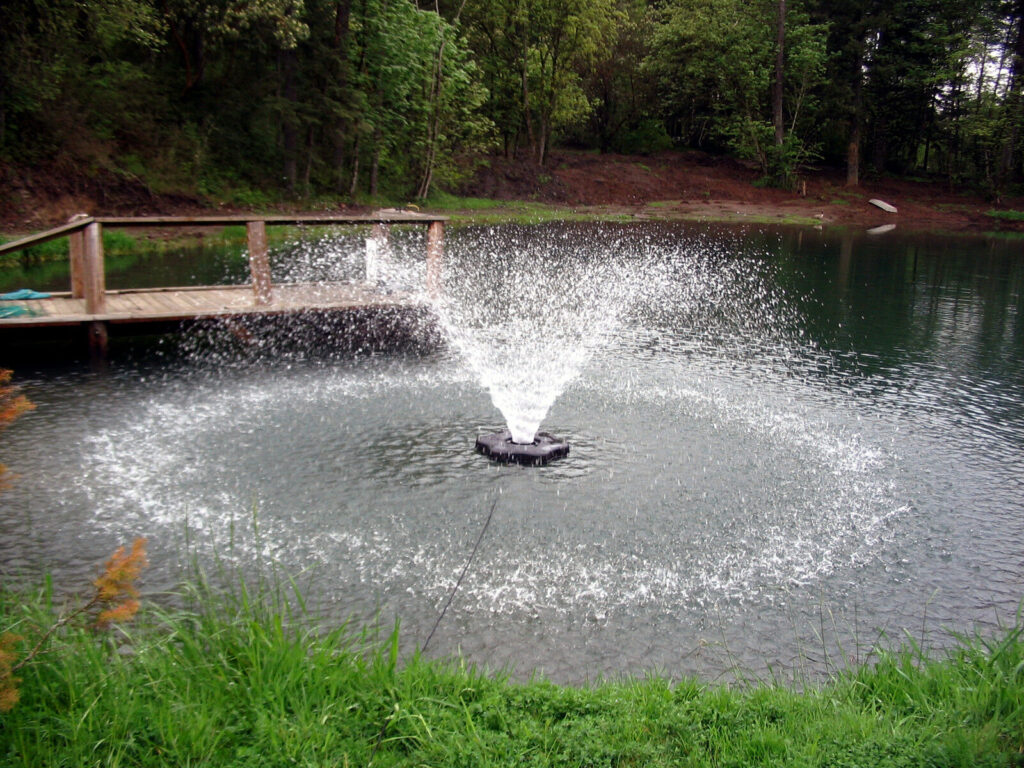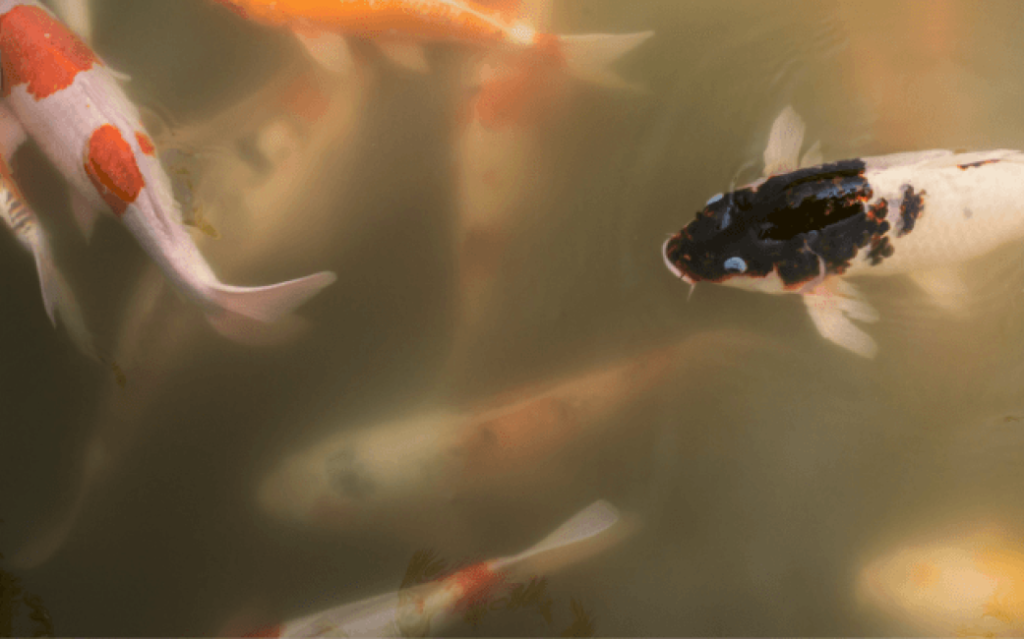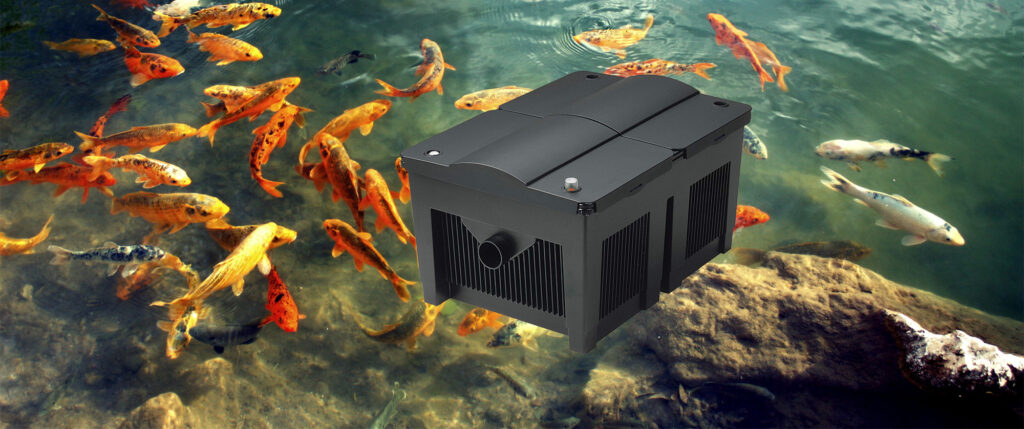
Seemingly, draining a pond is one of the most effective ways to clean it. After all, everything from sludge to algae exits the pond alongside the water. Also, it’s easy to physically remove anything that is left. However, according to experts, it does come with unfavorable side effects for your pond. One example is it annihilates the pond ecosystem that has been built through months or even years of work.
Consequently, you shouldn’t be so eager to empty the pond of its contents. However, that leaves you with the question of how to clean a pond without draining it? Since we already have that information, it makes sense that we should share it as we have done in the write-up below. Use it as a guide, and you’ll soon find out that you don’t need to be draining your pond every time it seems murky, cloudy, or dirty.
Experts in pond care rarely recommend that you drain your pond when cleaning it. In fact, some may consider it a rookie mistake made by new pond owners. That said, there is a misconception in some circles that if you want the pond to be sparkling clean, draining it is the only way to make it happen. This couldn’t be further from the truth.
While you may not realize this, your pond already has a natural cleaning system in place. This system makes the structure safe for fish and consists of many beneficial bacteria that grow their population over time. Since new ponds rarely have enough bacteria for the cleaning process, they tend to look dirtier than usual.
By draining the pond, you risk resetting it to this “new” state where it will have to build another ecosystem with enough bacteria. Even when it is absolutely necessary to drain the pond, which is rare, you are advised to drain it partially instead of emptying it.
Another risk of draining the pond is that you may end up refilling it with water that is unfavorable for pond life, including the fish, plants, and the bacteria we mentioned before. Of course, if this happens, it will likely lead to the death of these life forms.
Notably, the water in question needs to be properly dechlorinated Trusted Source Dechlorination Dechlorination proceeded much faster in the presence of quinones that are prone to addition reactions with thiols: juglone, naphthoquinone, and benzoquinone. www.sciencedirect.com before it can be put in the pond. Of course, this is another tricky process you’ll have to deal with once you opt to drain the pond.
Additionally, proponents of pond drainage assume that there are no other ways to effectively clean the pond, which is wildly inaccurate. There are, in fact, several ways to get the job done depending on the type of dirt that you’re dealing with. Examples include vacuuming, using skimmers, installing water filtration systems, and even chemicals that are harmless to your fish.
To conclude, avoid draining the pond as much as possible. Also, if there is no way out of it, you can probably make do by draining just a small section of the pond.
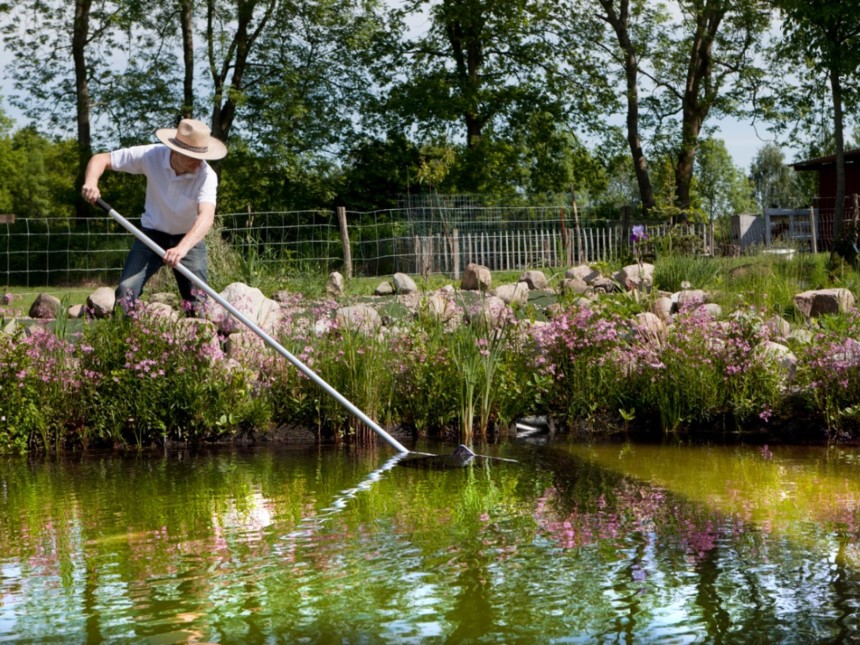 How often do you need to clean your pond?
How often do you need to clean your pond?How often you need to clean the pond will vary depending on several factors. These include the location of the pond, the season, the presence of weeds and algae, fish population, and more. It is essential to note the most prevalent causes of dirt in a pond are fallen leaves and plants, fish waste, weeds, and algae.
Of course, if the pond is located in an isolated area with no trees and large plants around it, you won’t need to deal with fallen leaves as much. However, this might make it easier for weeds and algae to grow.
Additionally, if the fish population is high, you can expect the pond to almost always be dirty due to fish waste. This will, of course, increase the frequency with which you clean the pond. That said, pond owners who keep fish should always ensure they clean their ponds just before and just after winter.
Without a regular cleaning schedule, there should be some debris and leaves on the pond surface at the end of autumn. Additionally, there may be build-up of sludge at the bottom of the pond. If you don’t clear these substances out, your fish might end up suffering.
Notably, the sludge is most likely a byproduct of the leaves that became waterlogged on the water surface, dropped to the bottom of the pond, and are now decomposing. As they decompose, they take up oxygen in the water and may even produce some harmful gases such as hydrogen sulfide.
If these materials are left on and in the water just before winter, the pond may freeze over. Consequently, the fish will be locked in the pond, with minimal oxygen levels and the decomposition process’s harmful byproducts. If this happens, the fish will suffer and may die. As such, it remains imperative that you clean the pond from time to time.
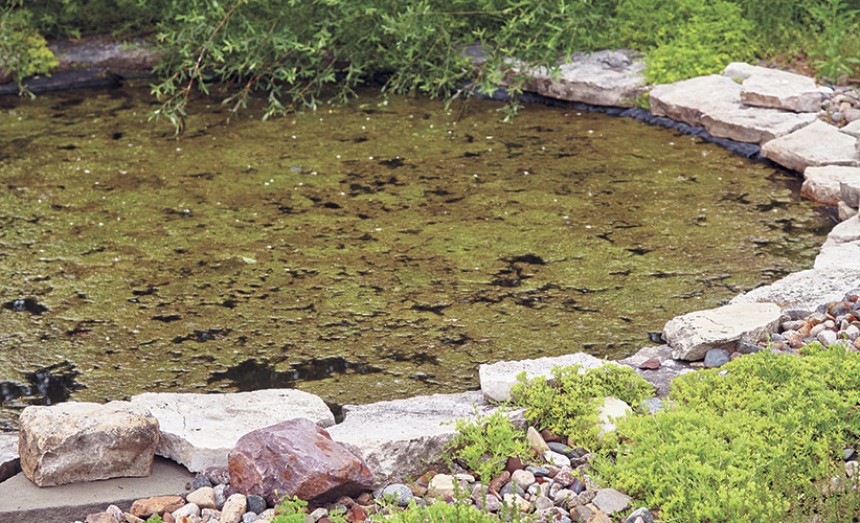
Even with the absence of these physical characteristics, your pond may still need cleaning, and you can determine this by using water testing kits. You should thus make sure you test the water quality regularly.
Once you’ve concluded that cleaning the pond is necessary, the steps below tell you how to clean a koi or other fish pond without draining it.
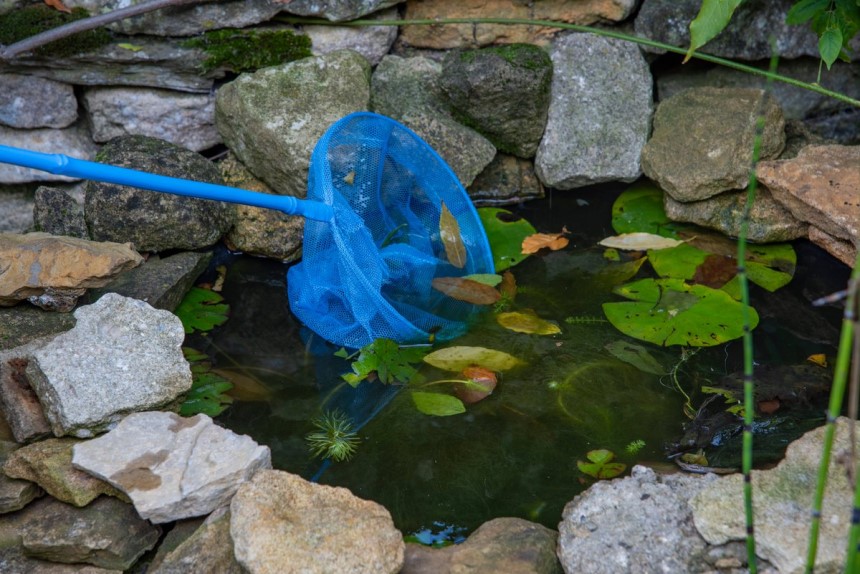
The most budget-friendly option is a net, just like the ones used to clean swimming pools. It will consist of a long handle, a mesh basket, and a frame that holds the mesh bag in place. You should know that this method only works for small ponds.
Nonetheless, if your pond is small enough, ensure the handle can at least reach halfway through the water surface. By doing so, you ascertain the net’s ability to clean the entire pond. Use the net to clear out the leaves and debris on the water surface.
Also, use the net regularly since leaves become waterlogged after some time and drop to the bottom of the pond.
A pro tip is that a larger mesh basket gets the job done faster. However, if you fill it up too much, it may be harder to lift it out of the water. If the net doesn’t work for you, the next best option is a skimmer.
Depending on the size of the pond, a skimmer purchase can be affordable or expensive. Nevertheless, these machines automatically work to get rid of debris on the pond surface. Since they work continuously, you’ll have more peace of mind knowing that a skimmer is on the pond.
Also, this makes it easier to go on holiday. There are three main types of skimmers in the market, i.e., the box skimmer, the floating skimmer, and the submerged option. The first type is installed at the edge of the pond. As for the two other skimmer types, they stay true to their names, and one floats on the water while the other is installed under the water surface.
A highly rated box skimmer that comes recommended by other users is the Aquascape 43022 signature model. This works for larger ponds that are up to 1000 square feet in size. Also, there seemingly won’t be a need to get another skimmer for your pond, thanks to the included lifetime warranty.
Lastly, the storage baskets inside the skimmer will need to be emptied regularly. How long you have to wait between emptying sessions will depend on the size of the basket and how much debris there is in the pond.
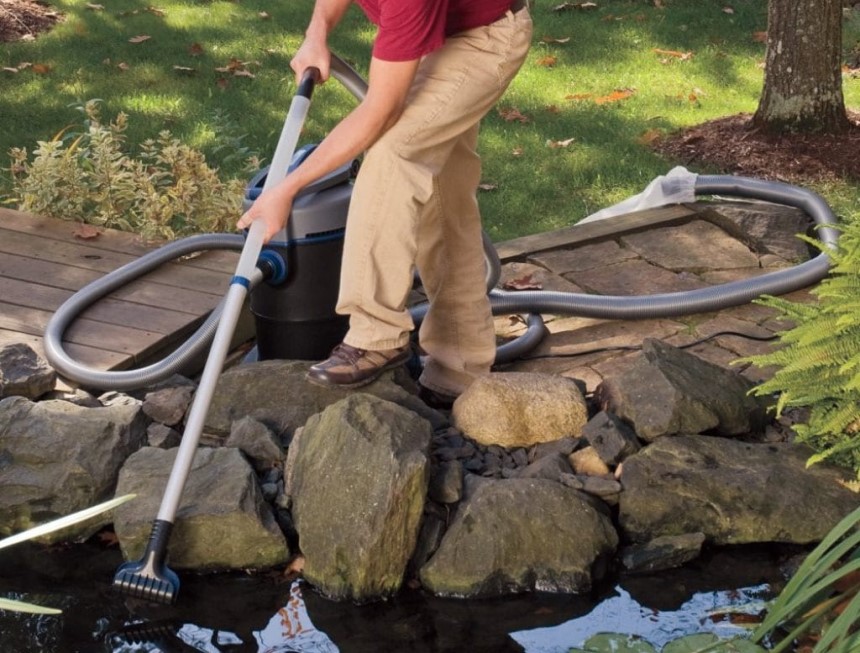
The best way to clean sludge from the bottom of the pond without having to drain it is to use a vacuum. There are various vacuum models that you can choose from in the market. Some of them come with attachments that help you dislodge sludge from hard-to-reach areas. However, these are top-of-the-line models that will need you to spend a pretty penny to acquire.
Seemingly a lot of previous users have been impressed by the OASE Pondovac 4. The 16ft suction hose and the 7ft suction depth of the machine seem geared towards the needs of larger ponds. That said, it will work for smaller ones as well.
These vacuums suck in water with impurities, filter out the sludge then dump the water back into the pond. However, the capabilities of the Pondovac 4 are not standard across all pond vacuums. They vary in terms of suction power, flow rates, hose length, discharge systems, and more. Consequently, it’s essential to consider the size and needs of your pond before you buy one.
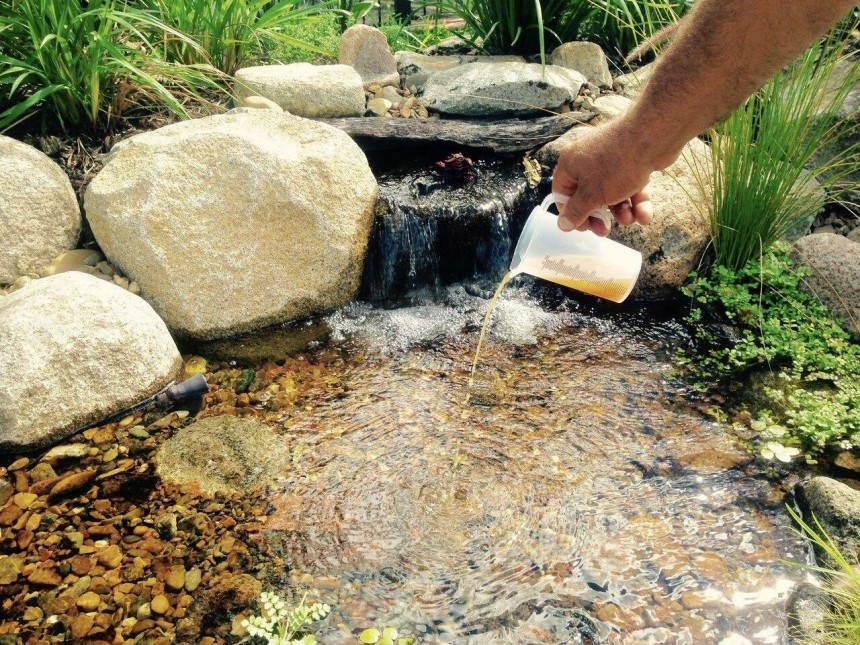
Also, once broken down, the sludge can provide some much-needed nutrients to the plants, insects, and other microorganisms in the pond. However, during its decomposition, sludge also happens to release ammonia which can make living in the pond impossible for fish.
For getting rid of your sludge problem when you’re pressed for time, you should consider introducing commercial variations of pond bacteria. They work the same way as natural pond bacteria, and the best thing is that you don’t need to wait for their numbers to multiply organically. Instead, you can buy as much as you need from Amazon and introduce it into the pond periodically.
The Aquascape 98949 bacteria concentrate remains a popular option for pond owners since the container holds enough bacteria for large ponds. It is also effective in maintaining the ideal biological balance for your pond ecosystem.
Next, if you keep a fishless pond and want to get rid of sludge, these beneficial bacteria can take on the job without the help of a vacuum. However, as you can expect, the process will take a while. That said, if there are no fish, there are zero risks in letting the beneficial bacteria take as long as they need.
Do note that as the sludge is being broken down, there will be a lot of particles of the same floating in the water. Consequently, you may conclude that the bacteria isn’t working since your pond seems dirtier than usual. This would be untrue.
If you have an active filter in the pond, you may not have to suffer through the dirty-looking pond water for long. However, if you don’t, you’ll just have to wait for the water to clear out on its own.
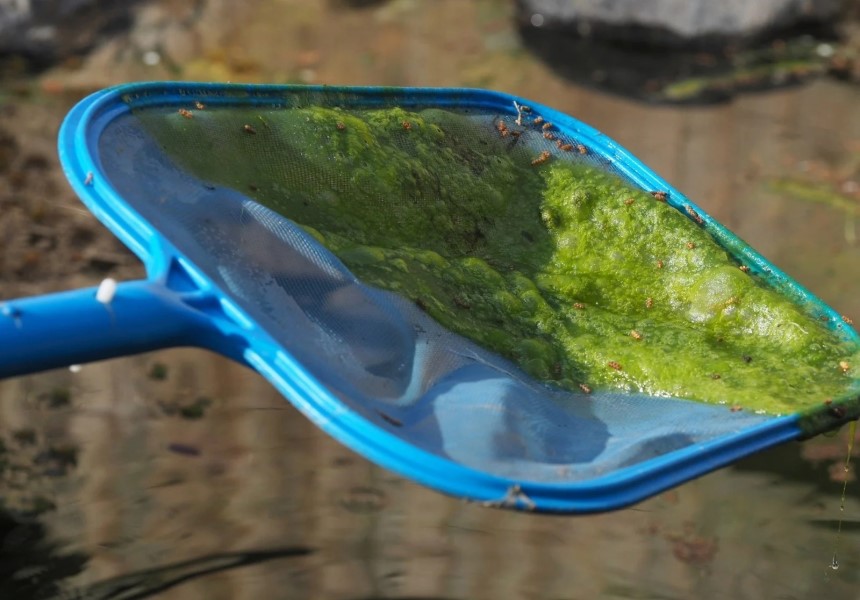
Notably, free-floating algae can also increase to a point where it minimizes sunlight levels in the pond. This spells doom for other beneficial underwater plants. There could also be low oxygen levels in the water as a result of the algae.
If the algae problem isn’t dire just yet, you can use UV clarifiers. These are popular algae solutions, and their effectiveness deserves high praise. The UV clarifiers are mechanical devices that pull in water then use UV lights to destroy the algae. Notably, this only works for free-floating algae. Depending on the dynamics of your pond, it may also be feasible to rake out the free-floating algae or to use a net.
For string algae, the vacuum you used to get rid of sludge should be more than enough. Take care as you are disposing of the string algae not to reintroduce it to the pond. Of course, the UV clarifier and pond vacuum are not the only way to control the algae population. You can try planting trees, reducing the available nutrients, and even using chemicals when the situation warrants it.
Aerating the pond seems to be effective in controlling the free-swimming algae population as well. This is because it leads to an increase in the population of the beneficial bacteria in the pond. Consequently, the algae won’t get the excess nutrients they need to grow and multiply.
Water filtration should also be a part of your pond cleaning efforts. Ideally, you should have a filtration system installed when you first build the pond. Once it is in place, the filter media in the filter will form a habitable home for bacteria. It is these bacteria that break down some of the impurities and toxins in the pond water.
Also, the filter media should be able to strain some of the solid impurities from the water. Over time, the filter media will clog up with these solids, making it harder to function. Consequently, it may need to be changed out. However, you should avoid doing this frequently as you eliminate the bacteria in the media.
Notably, you will come across reusable filter media as you look through your options. While this is cheaper, it doesn’t change the fact that you’ll displace the bacteria that are already settled on the media when you clean them. Additionally, you can check to see that the other mechanical parts of the filter are working fine. If they are not, the device may not be as effective in carrying out its mandate.
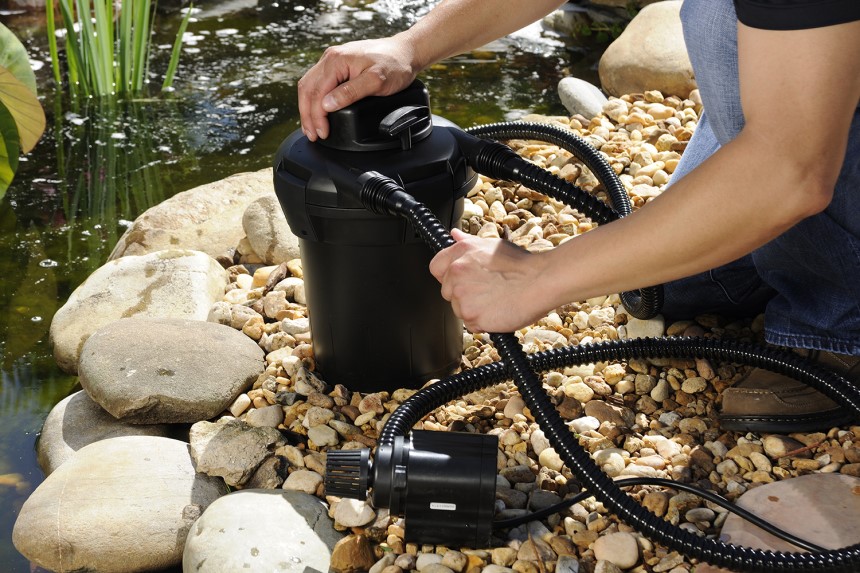 Final thoughts
Final thoughtsYou can go years before you ever need to drain your pond, even though you’ll occasionally encounter dirt and muck. The tips above tell you exactly how to clean a pond without draining it, and you should make full use of them. Also, you may have noticed that most of them are cheaper and more cost-effective than pond drainage. Lastly, they don’t have nearly as many downsides.
